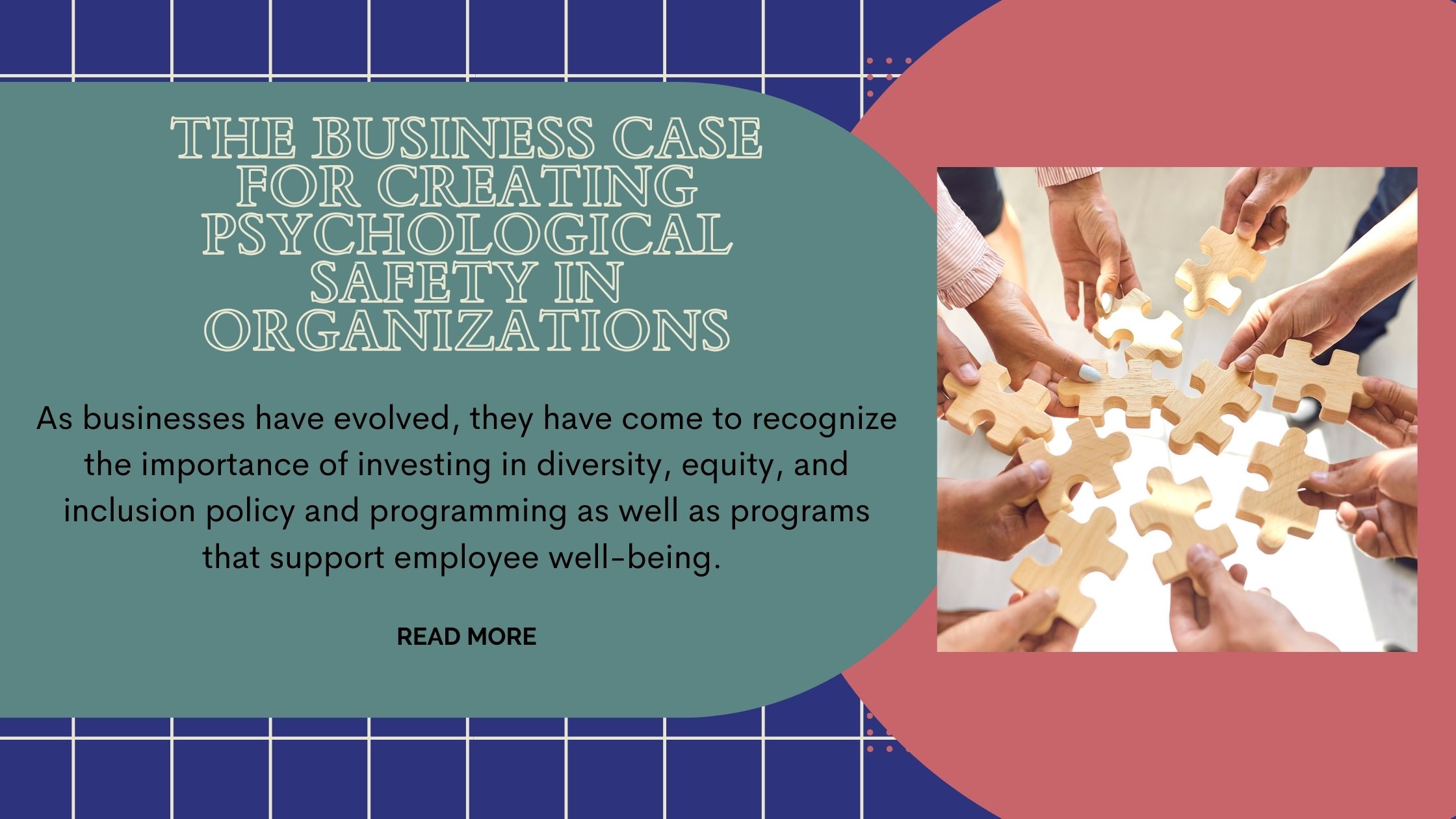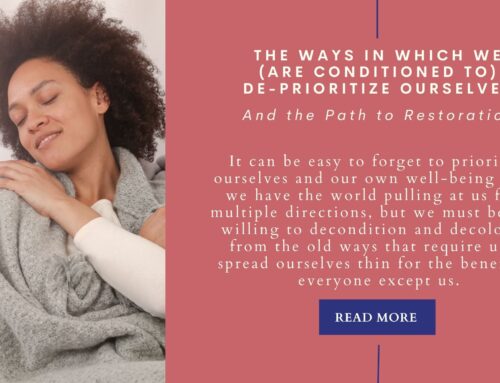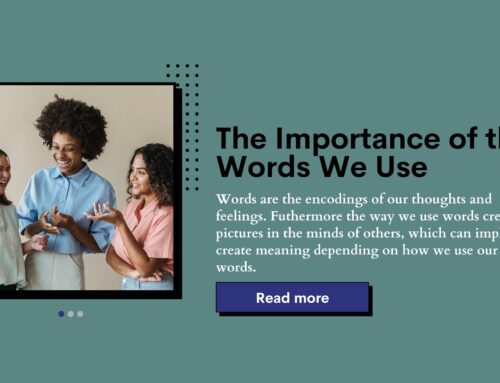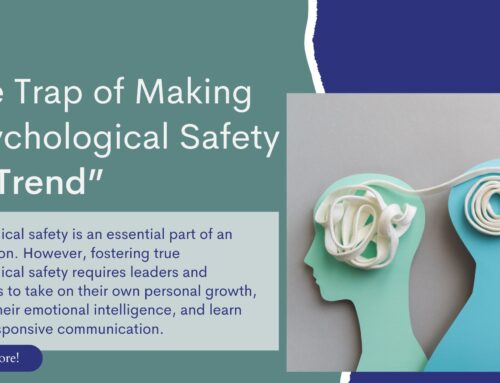
As businesses have evolved, they have come to recognize the importance of investing in diversity, equity, and inclusion policy and programming as well as programs that support employee well-being. However, the link between these and psychological safety is often missed and thus is the business case for training leadership within the organization.
When we look at psychological safety, there are 4 elements to consider; inclusion, safety to learn, contribute, and challenge. In psychologically safe environments, employees are empowered to express their ideas, admit mistakes, and collaborate openly, resulting in a culture of trust, respect, and inclusivity.
Improved Employee Well-being:
Research by Harvard Business Review (2019) showed that psychologically safe workplaces lead to reduced stress levels and improved mental health among employees. For instance, Google’s Project Aristotle found that teams with high psychological safety scores reported higher job satisfaction and overall well-being. This translates to fewer sick days and lower healthcare costs for the organization.
Enhanced Creativity and Innovation
A study published in the Journal of Applied Psychology (2020) found that psychological safety significantly correlates with creativity and innovation. When employees feel safe to share their unconventional ideas, organizations can harness the collective creativity of their workforce. A classic example is Pixar Animation Studios, where director Ed Catmull created an environment where candor and experimentation were celebrated, resulting in groundbreaking animated films.
Increased Productivity:
The American Psychological Association (APA) published a study in 2017, highlighting the link between psychological safety and productivity. When employees feel safe to ask questions, seek help, or offer suggestions, they work more efficiently and with higher motivation. Salesforce, a global CRM leader, encourages psychological safety through open communication and has consistently reported increased employee productivity.
Higher Employee Engagement:
Gallup’s State of the American Workplace report (2021) emphasized the role of psychological safety in boosting employee engagement. Engaged employees are more committed to their work and the organization’s goals. One notable example is Microsoft’s cultural transformation under CEO Satya Nadella, focusing on fostering psychological safety and achieving a remarkable increase in employee engagement.
Better Decision-Making:
A study in the Academy of Management Journal (2019) found that psychologically safe teams make better decisions. Open discussions and diverse perspectives lead to well-rounded and informed choices. An illustrative case is Toyota, which has long embraced the concept of “kaizen” (continuous improvement), driven by employees feeling safe to identify and address issues in real-time.
Enhanced Leadership Effectiveness:
In a study by Forbes (2018), leadership effectiveness was closely tied to psychological safety. Leaders who prioritize psychological safety create an atmosphere of trust and respect, which contributes to more effective guidance of their teams. IBM’s CEO, Ginni Rometty, emphasized psychological safety as a core leadership principle during her tenure, enhancing leadership effectiveness.
Employee Recruitment & Retention
Companies prioritizing psychological safety become employers of choice. Netflix, for instance, is known for its high-performance culture coupled with psychological safety principles. This approach helps them attract and retain top talent, giving them a distinct competitive advantage in the tech and entertainment industries.
The Competitive Advantage
The bottom line is that when organizations choose to train their leaders and managers in how to create psychologically safe spaces for their employees, they create loyal teams that innovate, thrive, are more productive, and that want to stay and grow with the company. But moreso, beyond creating a healthy culture, investing in training on psychological safety directly impacts an organization’s bottom line. Companies that invest in psychological safety experience improved employee well-being, enhanced creativity, higher employee engagement, better decision-making, more effective leadership, and they experience a notable competitive advantage. For companies today, it’s critical to see that psychological safety isn’t just a trend; it’s a strategic necessity for long-term growth, success and sustainability.
Need a speaker? Learn more about Dr. Maiysha’s speaking, consulting, and training offerings. Bring the tools of trauma informed listening and speaking into your organization and create psychological safety for your leaders and staff. Increase productivity, employee satisfaction and retention. Contact us today and schedule a call with Dr. Maiysha to learn how we can improve your workplace culture. https://mindremappingacademy.com/corporate-programs






